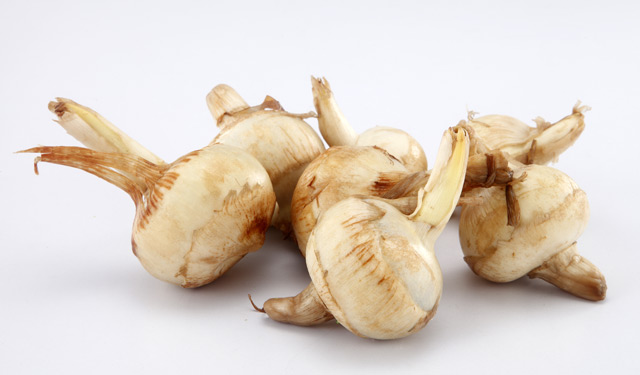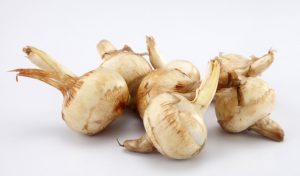- Diaper rash
- Gastrointestinal inflammation
- Weight loss
Arrowroot – sources, health benefits, nutrients, uses and constituents at NaturalPedia.com
Wednesday, June 21, 2017 by Bridgette Wilcox
http://www.naturalpedia.com/arrowroot-sources-health-benefits-nutrients-uses-and-constituents-at-naturalpedia-com.html

Arrowroot, also known as arrowroot starch, is a powder taken from the roots of a plant of the same name. The plant itself is native to South America, according to StyleCraze.com. The root grows underground, and is shaped like a cylinder, covered with scales on the surface. This root is beaten and ground, then dried to make the arrowroot powder, which contains 23 percent starch.
The resulting powder is very fine with a clear white color, and is often used as a thickening agent for sauces, being able to thicken twice as much as regular flour. It is also used as a baking aid to replace flour in cookies and crackers, making it ideal for those who cannot tolerate gluten, particularly those who have Celiac disease.
List of known nutrients
- Calcium
- Copper
- Folates
- Iron
- Magnesium
- Manganese
- Niacin
- Phosphorus
- Potassium
- Pyridoxine
- Riboflavin
- Selenium
- Sodium
- Thiamin
- Vitamin A
- Vitamin C
- Zinc
Medicinal uses for arrowroot
When it comes to health benefits and medicinal uses, this starch is highly undersung, though it has been used in many ancient cultures as a herbal remedy for thousands of years.
The high copper and iron content in arrowroot makes it great for preventing anemia, as the two minerals are vital to the production of red blood cells, OrganicFacts.net said.
With its high levels of vitamin B, the powder is also great for maintaining hormonal balance. In particular, it contains a significant amount of folate, a B vitamin that has been deemed crucial for pregnant women, as it can prevent birth defects in unborn children.
As an alternative to flour, it can promote gastrointestinal health among those who have Celiac disease, which affects the small intestines.
Arrowroot also has a substantial amount of protein, which can boost growth and development. Arrowroot in particular is a plant protein, making it better for the body as it is easier to process than animal proteins.
Arrowroot may also help with:
Body systems supported by arrowroot
These are the body systems that can benefit from arrowroot, according to HealthBenefitsTimes.com.
- Blood circulation
- Digestive system
- Immune system
- Metabolic processes
Ways to use arrowroot
Arrowroot powder is often used to replace flour in recipes, or as a thickening agent. Its form makes it very easy to incorporate into your diet. Apart from using it as the main starch in a number of baked goods, PaleoGrubs.com also recommended making noodles using arrowroot powder. It can also be used for breading in onion rings and fish sticks, and is a great base for pancakes and crepes as well. Arrowroot starch can also be used as a safe alternative to commercial baby powders.
Where to learn more
- 2 Amazing Natural Beauty Recipes
- Why You Should Make Your Own Chemical-Free Deodorant At Home (Recipe Included)
- Homemade Ointments for Burns, Cuts, and Rashes
- 5 Beauty Products You Can Make Using Coconut Oil
- Add Edible Flowers to Your Healthy Diet
Summary
Arrowroot promotes healthy red blood cell production, as it contains iron and copper.
It is rich in vitamin B, particularly folate, allowing it to prevent birth defects in unborn children.
It’s a great replacement ingredient for gluten-intolerant people, and can help ease gastrointestinal problems.
It can also boost growth with the amounts of protein it contains.
Arrowroot is a superb thickening agent.
Sources include:
Tagged Under: Tags: arrowroot







